|
|
| Tapestry Life Resources & Body Balance II Newsletter |
Health for
Body, Heart,
Mind & Spirit
April 2011 |
|
All articles written by Suzanne H. Eller unless otherwise indicated. © Suzanne H. Eller, 2011 |
|
 Greetings! Greetings!
It's hard to believe that spring is in full-bloom, but after the colder than usual winter, the flowers and greening trees are a welcome sight.
Spring has always been a time of activity and of contemplation for me. Activity because the days are longer and contemplation because budding nature always makes me think of the sacred. Similarly, Lent and Easter, thought later this year, remind us to get our priorities straight and to celebrate life.
We at Body Balance II hope one of your priorities this spring will be your health. The weather is better for outdoor exercise and work in the yard. Fresher food is in the markets and will soon be in our gardens. Vacations and cook-outs mean we will get needed rest and spend more time with family and friends just having fun. Life is good.
This month Suzanne and Susan will be attending the American Massage Therapy Association Conference and learning new techniques for treating low back pain. We look forward to sharing what we learn with you in the coming weeks.
Please enjoy this month's newsletter and pass it on or post it to your Facebook wall. We hope to see you soon. Have a Happy Easter and glorious spring. |
|
Connective Tissue Massage
Releasing the body's fascia
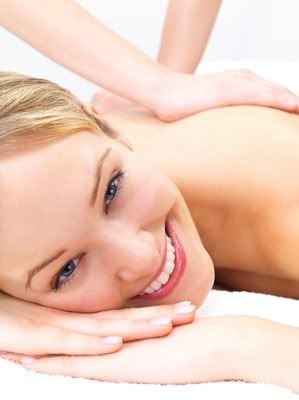 Fascia is one of the most amazing structures of the human body. Most definitions will tell you that it is a tough but flexible fibrous tissue, or that it is a band of innervated connective tissue made of collagenous fibers and elastic fibers. The trouble is those definitions don't mean much to most people. Fascia is one of the most amazing structures of the human body. Most definitions will tell you that it is a tough but flexible fibrous tissue, or that it is a band of innervated connective tissue made of collagenous fibers and elastic fibers. The trouble is those definitions don't mean much to most people.
Superficial fascia lies just under the skin. You've probably seen it when you've skinned a chicken. It lies between the chicken's outer dermal skin and the muscle. However, skinning a chicken won't give you a complete understanding because fascia has no beginning or end. It is a continuous sheet of tissue that literally covers everything in your body, from muscles and bone to organs and even cells. It also varies in thickness and elasticity according to its function. Fascia has an amazing ability to stretch and adapt to underlying structure, and it also has a quality called thixotrophic response, meaning that it can change from a solid state to an almost liquid gel state. Heat can cause this to occur (think heated pillows in the massage room) as can direct pressure (trigger point therapy). However, when fascia lacks flexibility it can stick to the adjacent structures causing imbalance and pain throughout the area. Compare it to a sweater with a large pick in it. It distorts the shape of the whole sweater. Some fascia has a specific name according to its function or the organ it covers. For example, most people have heard of plantar fasciitis, where the fascia, which in this case is ligament connecting the heel to the toes, becomes inflamed and causes extreme heel pain. Myoskeletal fascia can also be tendon. The fascia covering the bones is called periosteum while the fascia covering the lungs is the pleura. The fascia covering the brain is the meninges, and the fascia covering the heart is the pericardium. If you've ever had pleurisy or meningitis, you know how serious a disease of the fascia can be. When I went to the Body World Exhibit, I was amazed at how simply adding the periosteum to the bones turned a skeleton into a human being. If you'd like to see some surprising examples of fascia, please go to the Body World website or to the Bodies Revealed website. Fascia supports and stabilizes the body. Scientists believe that it may also act as a watery communication medium that is faster than the nerves in sending messages from one part of the body to another and even in communicating with the outside environment. Some scientists even think fascia may be the seat of human consciousness, rather than the brain. Connective tissue massage addresses the superficial fascia and the fascial layers of the muscles and bone. Rolfing is a specific massage modality that requires many hours of special training, but it can go to the deeper fascial layers, including those of the organs, and release them. Connective tissue massage (sometimes called myofascial release) is generally lighter and gentler and usually does not hurt as Rolfing sometimes does. However, much of what massage therapy knows about working the fascia comes from the work of Ida Rolf, who developed the ten-session Rolfing technique. Rolf first discovered that the collagen and elastin fibers of the fascia could be stretched and adhesions in the fascia could be released. Adhesions are formed when either physical or, surprisingly, emotional trauma causes the fascia to restrict and inappropriately activate nerve pain receptors. The pain response can occur at the location of the injury or somewhere else because it follows lines of tension and weakness. This is one way trigger points are formed within the connective tissue and muscles. If the fascia becomes overly inflamed or micro-calcifications result, range of motion and sensitivity to stimuli are affected. Indeed, scar tissue is a form of fascial adhesion that is necessary for healing to occur but that can cause problems in movement and compressed blood or lymph flow after healing is complete. Massage can help straighten the collagen fibers in the scar tissue and allow for more normal, pre-injury stretchability. One specific time connective tissue massage is contraindicated is when the "splinting" of the fascia is needed by the body to stabilize a compromised system. For example, if a person has a compressed vertebral disk, the fascia might tighten, even if it is painful, to protect the backbone from greater injury and spinal cord damage. However, the gentle touch of connective tissue massage means that it can be used safely in most instances. Connective tissue massage allows a trained massage therapist to feel for adhesions and to gently stretch the afflicted area until the restriction is released. She might first apply heated stones or pillows, then stretch the superficial fascia, and finally use skin rolling, cupping, or static friction to further release restrictions. All massage manipulates the fascia, but connective tissue release techniques are designed specifically to stretch the fascia and to aid it in moving from sol to gel. Once adhesions in the fascia are released, the underlying muscles often relax on their own, without deeper pressure. Likewise, joints move with more freedom and less pain. Areas under the skin that have come to feel hard and immobile, relax and soften. Fascia has been called the "web of life". Self-care practices to keep it healthy include drinking water, stretching, and seeing your massage therapist regularly. |
Spring Reading
Recommended Book Selections
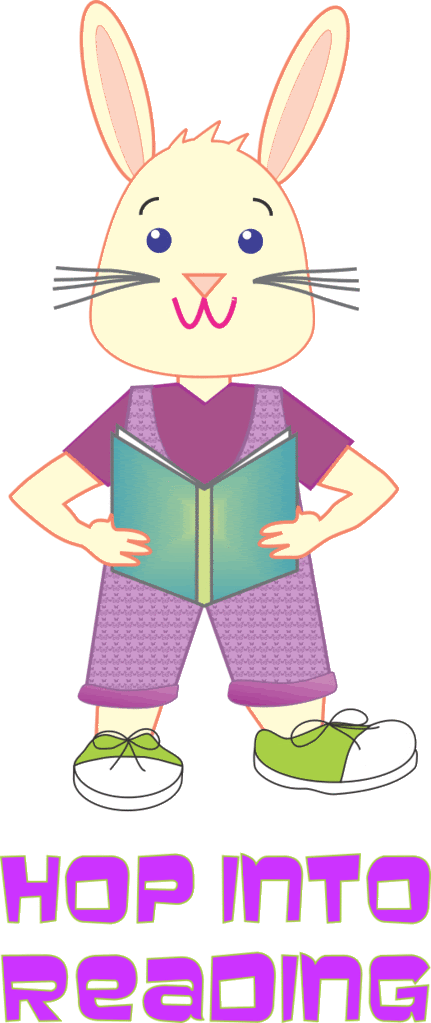 An early spring is here, and the warmer weather has us working in the yard and doing things like walking and biking that we couldn't do during the cold winter. Daylight savings time has also given us another hour of light in the evening. However, unexpected cold snaps and rain have kept indoors as well. This month's reading list includes two nonfiction selections and two novels. Nonfiction is often a choice when we want to read something interesting but not get so caught up in the story that we don't have time to do other activities. I hope some of the selections below will fit the bill for your springtime reading choices.

Water for Elephants
by Sara Gruen
Paperback
List Price: $14.95
Our Price: $6.00
I read this book during this year's "Let's Talk about It" at the Hickory Public Library, and it is the best book I've read in a year. It's also timely because the movie version will be released later this month. Set during the Depression and the present, the plot alternates between ninety-year old Jacob Jankowski's experience in an assisted living facitlty and his memory of his life after his parents died when he was the vet for a Depression-era circus. Life there is not glamorous and romantic. Indeed, it is sometimes cruel and violent, but it is here Jacob meets the two loves of his life. I really love this book, and I am looking forward to the film version.
 Reiki For Dummies Reiki For Dummies
by Nina L. Paul
Paperback
List Price: $19.99
Our Price: $9.58
I first saw this book in a bookstore and read some of it while I drank my coffee. I was surprised at the depth of the information. After looking at it several more times, I decided to add it to my Reiki library. Whether you are new to Reiki or an old hat, I think you'll find the layout and information in the book enjoyable.
 The Ballad of Frankie Silver by Sharyn McCrumb Paperback
List Price: $7.99
Our Price: $10.00
You can probably find this book easily in the library or a used book store as it's publication date is 1999. It is really two stories- the present day story of Sheriff Arrowood of Wake County, Tennessee, who has been called to witness the execution of a man he arrested twenty years earlier and the parallel story of Frankie Silver, the first woman hanged in North Carolina in 1832 in Morganton in a time when Burke County ran all the way to the Tennessee line. If you are from around here, you will recognize some of the old family names and locations. Something troubles Arrowood about the two crimes, and he searches for the truth. Besides being an incredible, partly-true and entertaining story, it offers a slice of local history that I found fascinating, especially as it relates to attitudes of and about people in our area that stem from old English and Celtic ancestral attitudes.

Cracker Culture: Celtic Ways in the Old South by Grady McWhiney
Paperback 
List Price: $24.00
This book is a classic and is hard history, not story. What it gives us is a look at the Celtic peoples (Scots, Irish, Welsh, Cornish) who largely populated the Southern frontier in our area of the South and what is now Appalachia while the English populated the coastal areas and much of the North. I read it years ago, but in light of the McCrumb book, I dug it back out. It sheds light on the differences between east and west in our own state and helps us understand the origin of the ignorant, lazy, bigoted, and poorly-bred, poor-white Southerner stereotype who is often the butt of ridicule in the movies, comedy routines and literature. (As McCrumb points out, the terms "redneck" and "hillbilly" are racial slurs against rural, usually poor, Southern whites, but nobody gets too upset about them.) What McWhiney proposes is that a continuation of the ancient clash between the Celts and the English in part led to the Civil War and still exists today. Whether you agree or not (many disagree), history buffs will enjoy the discussion. |
|
Saving Your Joints
Tips to keep your body moving
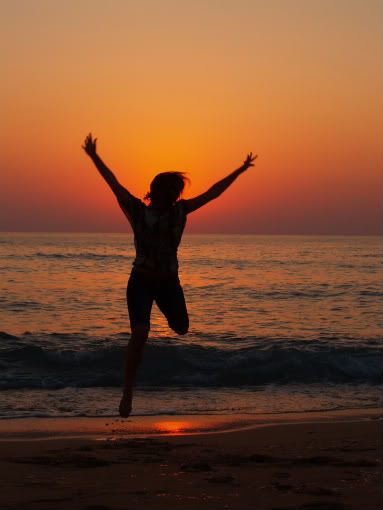 | |
Compliments
Patryk Choinski, stockxcng.com |
With warmer weather coming on, we resume activities like yard work and summer sports that can leave us feeling stiff and out of shape until we reeducate our bodies. Some of that discomfort comes from muscle strain, but as we age, we also notice that the joints are more easily irritated.
According to the Arthritis Foundation, even if you don't have joint pain and symptoms of arthritis, you may be at risk for developing it. To assess your risk, you can take their joint health quiz by clicking here. Osteoarthritis, the most common form of arthritis associated with aging, occurs when the cartilage that covers the joints breaks down and allows the bones to rub against each other. Other conditions that cause joint pain include gout, fibromyalgia, rheumatoid arthritis, lupus and scleroderma. For more information, click the "Conditions" tab on the link for the Arthritis Foundation above. The following are some tips that can help you improve your joint junction, no matter your age:
- Stretch and Strengthen: Although it seems counter-intuitive, taking your joints through a full range of motion actually lubricates the joints. Yoga and Tai Chi both improve joint function by significantly reducing swelling and helping your body learn to move more effectively. Likewise, warming-up stretches before walking or aerobic exercise can reduce the wear on joints and reduce injury. Even on days you don't actively exercise, you should do gentle stretches such as neck rotations or shoulder shrugs to keep your flexibility high. (See our past article on Exercises for Neck Pain for some suggestions.)
- Go for a Swim: The improvement of the joint health of my clients who participate in the popular water aerobics class at our local YMCA has convinced me that working out in water is the way to go if you have achy joints. Even if you don't go to a structured class, swimming is great exercise because it provides buoyancy to support the body's weight, which minimizes pain by reducing stress on the joints. Even walking in knee deep water is great for the knee joints.
- Lose Weight: Spring and summer are great times to start a diet because we are more active and have more availability of fresh fruit and vegetables at lower prices. Every pound of weight you carry puts five pounds of stress on the joints. The good news is that heavier people suffer less than their lighter counterparts from osteoporosis; the bad news is they suffer more from osteoarthritis, which in turn reduces physical activity. As one who struggles with weight issues, I know it is hard to lose the extra pounds, but eating small meals high in protein, fruits, and vegetables and watching my portions helped me more than skipping meals. If you need extra help, see a weight-loss specialist.
- Skip the Beef and Beer: Red meat, beer, and shellfish contain compounds that convert into uric acid called purines. Uric acid creates crystals that can lodge in the joints and cause an inflammatory disease called gout. Even five beers per week doubles the risk for gout. Red wine and fish, however, have some heart benefits and are better choices.
- Drink Water: Unless you have impaired heart or kidney function, you should drink half your body weight in ounces of water each day. That means if you weigh 175, you should drink 87.5 ounces of water - not tea, coffee, or soda - per day. Water is extremely important in the treatment of gout. Recent research shows that with each glass of water consumed, the risk for a gout attack decreases proportionately. (For more on the benefits of drinking water, see our past article on Your Body's Cry for Water.)
- Check Out Joint-Healthy Supplements: Glucosamine, Condroitin, Fish Oils and MSM are the most popular but are just a few of the recommended supplements for joint pain. See a more complete list at the Arthritis Today website.
- Try Alterative Therapies: Massage, Lymph Drainage Therapy, Cupping, Energy Work, Acupuncture and Chiropractic can all help stimulate blood and lymph flow, improve lubrication of the joints, and/or release muscle tension and/or subluxations that compress joints. Making them a part of your monthly preventative health-care regimen makes more sense than eating pain killers and relying on steroid shots or resorting to surgery, which should be a last-resort.
Debilitating joint disease does not have to be a fact of aging. There are many things we can do to improve our ability to move with grace and ease and to reduce eliminate pain. |
Essential Oil of the Month
Lemongrass
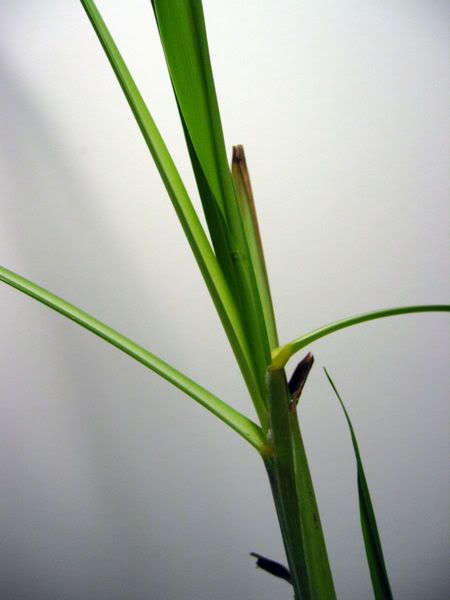 | |
Lemongrass plant
Used with permission:
Creative Commons Wikimedia.org |
One of the oils I use most frequently in the massage room is lemongrass. Lemongrass essential oil has a fresh, citrus scent that is a bit milder than real lemon. It is made from the leaves of the lemongrass plant; the same leaves are used to produce culinary lemongrass found in many Asian dishes and other fine cuisine. In India, it is called Lemon Verbena. The clean, sweet scent evaporates quickly, so it is lower priced than many other essential oils. Lemongrass EO is especially good for edema and muscle/joint pain. It has qualities that stimulate the parasympathetic nervous system (rest and digest), ease anxiety, calm the mind and relieve depression. These qualities are why I like lemongrass for massage. It needs to be diluted at a 20-80 ratio of EO to carrier oil, so I always use it with massage cream or oil and usually place it on the feet where the skin is thicker. Like most essential oils, the chemicals in lemongrass make it antibacterial, antifungal, antiseptic, and antipyretic (anti-fever). It is a great oil to have on hand when there is sickness or the possibility of sickness. A few drops in cleaning water or diluted and used in place of hand sanitizer can inhibit the spread of all sorts of diseases, including bacterial infections of wounds. It's great for body odor caused by microbes and makes a wonderful, effective deodorant! Add a couple of drops to bath water for all-over protection and to mop-water to disinfect and freshen the sickroom. Lemongrass is a wonderful, safe, natural insecticide. You can use it on animals and children over age six, but remember to dilute it at the 20/80 ratio if you use it directly on the skin.
Lemongrass has astringent properties. An astringent reduces blood flow and speeds up clotting in cuts. The astringent property can also aid contraction of gums, preventing tooth loss. I now add a few drops of lemongrass to my mouthwash. It is also good for spider veins.
Lemongrass EO has carminative properties; it can remove and prevent flatulence. Because it helps the muscles in the abdomen and the gut to relax, elimination of gas is facilitated.
Lemongrass EO is especially good for skin conditions and is used in many cosmetics, lotions, soaps and shampoos. It is especially good for oily or acne-prone skin.
Lemongrass EO is a nervine, which means it relieves some nervous disorders. These include anxiety and nervousness, trembling and shaking hands, nervousness, vertigo, Parkinson's disease, convulsions, and sluggish reflexes etc. It strengthens nerves and activates them, and it can be diffused into a room to lift the spirits and foster a relaxed mental alertness as well as to improve the above conditions.
Finally, Lemongrass EO functions as a tonic by toning all the body's systems, especially the respiratory, digestive, lymphatic, nervous and excretory systems.
Lemongrass Essential Oil Recipes
Deodorizing Room Spray
Mix 8 ounces of distilled water with 10 drops each of lavender and lemongrass essential oils. Great if you have pets.
Milk and Lemongrass Bath
Add 2-4 drops of lemongrass EO to a full bath tub, then swirl to disperse. Then add 2 cups of whole milk. Milk is especially soothing for children or those with sensitive skin. Substitute Epsom salts for the milk if you are swollen or stiff.
Detoxifying Sugar Scrub
Mix 4 tablespoons sugar with 2 teaspoons of carrier oil like jojoba and 10 drops of lemongrass EO, 5 drops of geranium EO, and 5 drops fennel EO. Massage onto warmed, wet skin and then rinse with warm water. Can be used twice a week to invigorate the system and to remove dead skin and toxic buildup.
Energizing Blend (similar to YL's En-er-gee)
Mix the following essential oils and store in a dark glass bottle: 3 parts lemongrass EO, 3 parts rosemary EO, 1 part nutmeg EO, 1 part clove EO, 2 parts fir EO, 1 part black pepper EO, 1 part juniper EO. Inhale or mix with carrier oil and use directly on body. (Works great for many headaches and/or mental fogginess.)
Insect Repellant
Use a 4 ounce plastic spray bottle. Mix 15 drops citronella EO, 10 drops lavender EO, 10 drops eucalyptus EO, and 5 drops lemongrass EO. Fill the rest of the bottle with distilled water or half water and half alcohol. Before use, shake the bottle and mist over your skin and clothing. DO NOT spray near eyes. If your skin is too sensitve, add more water to the mixture and dilute the affected skin area with a carrier oil. (Olive oil will work.)
As always, avoid using lemongrass EO if you are pregnant or nursing.
Ancient Wisdom Essential Oils sells a high quality Lemongrass. The 15 ml bottle is undiluted and is available at our storefront for $10.00. Click here to order.
|
|
|
|
Reiki I Class
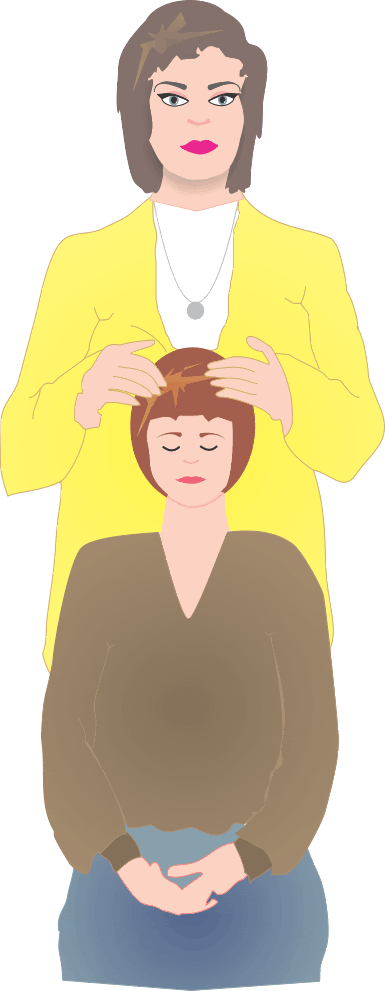
Reiki is a powerful energy healing modality that is easy to learn and that is safe, simple, and effective. On May 14, Suzanne Eller, Usui and Karuna Reiki Master will be offering a class in Usui Reiki, Level I class at the Wepner Wellness Center in Newton.
When: Saturday, May 14; 9:00 AM-6:00 PM (8 CEs for LMTs)
Where: Wepner Wellness Ctr. 2301 St. Paul's Church Rd. Newton, NC 28658
Who: Licenced Massage Therapists, Nurses, Health-Care Providers, & All Interested Persons
Cost: $150 through April 30 (early bird), then $200
Suzanne Eller is approved by the NCBTMB as a continuing education Approved Provider for massage therapy, #451254-10. |
|
|
Easter comes late this year. We want to wish you the best of the season, which celebrates hope, new life and new starts. If you have time off for the holiday and are planning to stay close to home, we invite you to treat yourself to a massage. If you are traveling, please be safe.
We hope to see you in our office soon.

Sincerely,
Suzanne Eller, LMBT 7619, 828-310-0161
Susan Smith, LMBT 6579, 828-320-6933
and Laura Queen, LMBT 3224, 828-638-3426
Tapestry Life Resources & Body Balance II, 318 2nd Ave. NW, Hickory, NC 28601 |
|
|
Don't forget Mother's Day
May 8
 | | Photographer: Warren Gold Swain from Veer |
|
Mother's Day is just after Easter this year. Give your mom the gift of relaxation by giving her a gift certificate for massage.
Or tell the significant others in your life that they can have an easy shopping experience by getting YOU a Body Balance gift certificate.
We have two ways for you to buy. You can come by the office and pick up your gift certificate or you can order and design your gift certificate online. Be sure to call first if you want to pick it up at the office so one of us will be there.
It's really easy to give that special woman in your life the gift of rest and relaxation. Thanks for your continued patronage. | | Online Gift Certificates make a great Mother's Day Gift! |
|
|